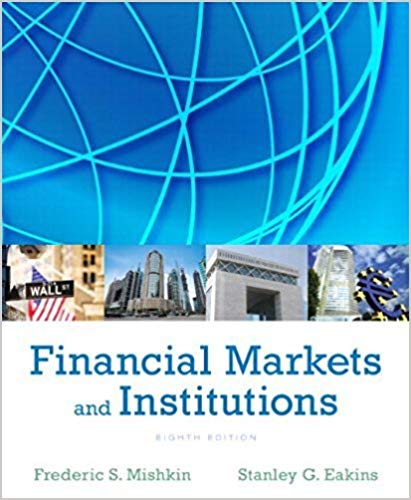Question
You would like to retire in 30 years. On Jan. 1, 2009 you start saving for retirement by depositing $250 each month for the next
You would like to retire in 30 years. On Jan. 1, 2009 you start saving for retirement by depositing $250 each month for the next 10 years and then let it grow for the remaining 20 years with no additional deposits during the last 20 years. Your bank account pays 5% interest compounded monthly. How much money will you have for retirement on Jan. 1, 2039? The answer is: _________ (Input your number in whole numbers with NO $ signs, commas or periods. For example $49,895.54 would be input as 49896.)
You have $50,000 which is deposited into a savings account on Jan. 1, 2009. This account pays 4% annually with interest compounded annually. What is the future value after 6 years (On Jan. 1, 2015)? The answer is: _________ (Input your number in whole numbers with NO $ signs, commas, or periods. For example $49,895.54 would be input as 49896)
On Jan. 1, 2009 you decide that you want to retire in 30 years with $500,000 (on Jan. 1, 2039). Your bank account pays you 7% interest compounded monthly. What is the amount that you need to deposit each month starting on Jan. 1, 2009 to retire with $500,000 on Jan. 1, 2039? The answer is: _________ (Input your number in whole numbers with NO $ signs, commas or periods. For example $49,895.54 would be input as 49896.)
On Jan. 1, 2009 you decide that you need to have $150,000 in your account when you retire in 20 years (on Jan. 1, 2029). Your bank account pays you 5% interest compounded annually. What is the amount that you need to deposit on Jan. 1, 2009? The answer is: _________ (Input your number in whole numbers with NO $ signs, commas or periods. For example $49,895.54 would be input as 49896.)
On Jan. 1, 2009, you start making monthly deposits of $500 each month into an account that pays 6% annually with interest compounded monthly. What is the future value after 5 years (On Jan. 1, 2014 no deposit is made)? The answer is: _________ (Input your number in whole numbers with NO $ signs, commas or periods. For example $49,895.54 would be input as 49896.)
On Jan. 1, 2009, you start making monthly deposits of $750 each month into an account that pays 8% annually with interest compounded monthly. What is the future value after 4 years? (The value on Jan. 1, 2013 assumes no deposit is made on that date) The value it will be is: _________ (Input your number in whole numbers with NO $ signs, commas or periods. For example $49,895.54 would be input as 49896.)
On Jan. 1, 2009 you start saving for retirement by depositing $1,000 each year for the next 30 years. Your bank account pays 6% interest compounded annually. How much money will you have for retirement on Jan. 1, 2039? The answer is: _________ (Input your number in whole numbers with NO $ signs, commas or periods. For example $49,895.54 would be input as 49896.)
On Jan. 1, 2009 you start saving for retirement by depositing $125 each month for the next 30 years. Your bank account pays 5% interest compounded monthly. How much money will you have for retirement on Jan. 1, 2039? The amount is: _________ (Input your number in whole numbers with NO $ signs, commas or periods. For example $49,895.54 would be input as 49896.)
You would like to retire in 30 years. On Jan. 1, 2009 you start saving for retirement by depositing $250 each month for the next 10 years and then let it grow for the remaining 20 years with no additional deposits during the last 20 years. Your bank account pays 5% interest compounded monthly. How much was in your account on Jan. 1, 2019? The answer is: _________ (Input your number in whole numbers with NO $ signs, commas or periods. For example $49,895.54 would be input as 49896.)
You have $50,000 which is deposited into in an account on Jan. 1, 2009. This account pays 4% annually with interest compounded monthly. What is the future value after 6 years (On Jan. 1, 2015)? The answer is: _________ (Input your number in whole numbers with NO $ signs, commas or periods. For example $49,895.54 would be input as 49896.)
Step by Step Solution
There are 3 Steps involved in it
Step: 1

Get Instant Access to Expert-Tailored Solutions
See step-by-step solutions with expert insights and AI powered tools for academic success
Step: 2

Step: 3

Ace Your Homework with AI
Get the answers you need in no time with our AI-driven, step-by-step assistance
Get Started


